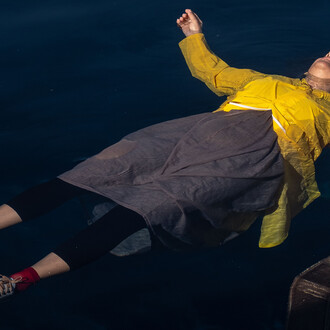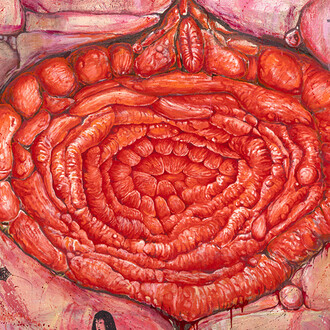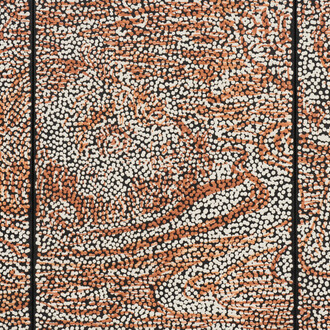All of the works displayed in the Calligraphy and Painting Ⅱ section are masterpieces that have been specially selected to demonstrate the characteristics of each period. The section consists of three parts, the room of masterpiece and two thematic rooms. For the conservation of the paintings and calligraphy, exhibition replacements are planned thrice a year in this section.
Watching fish slowly swimming, the worries of the world seem to drift away with the flow of the water. Shoals of fish filling the river represent the abundance of life, and fish also symbolize fertility with their large clusters of eggs. In Chinese, the character “餘” (yú), meaning “leisure” is pronounced the same as the character “魚,” meaning “fish.” Ancient painters would draw fish to represent the three leisurely times, night, rainy days, and winter days, on which people could indulge in reading free from the burdens of farming. We hope that the fish featured in these paintings and Buncheong wares will help you enjoy a tranquil time at the museum.
Kang Sehwang (姜世晃, 1713–1791) was born into a prestigious family in the Jinju Kang clan. They gained the honor of having men from three consecutive generations—Kang Sehwang, his father Kang Hyeon (姜鋧, 1650–1733), and his grandfather Kang Baeknyeon (姜柏年, 1603–1681)—entering the Giroso, a club of venerable elder statesmen reserved for incumbent or retired officials of senior second grade or higher and aged over seventy years. For his outstanding talent in poetry, calligraphy, and painting, Kang Sehwang was praised as possessing the Three Perfections. He left behind a substantial legacy in the art and literature of the late Joseon dynasty. His grandson Kang Io (姜彛五, 1788-1857) inherited his artistic talent and was gifted in both calligraphy and painting.
In 2017, the National Museum of Korea purchased the Portrait of Kang In (姜亻+寅 , 1729-1791), a son of Kang Sehwang. In the same year, the Overseas Korean Cultural Heritage Foundation acquired from an overseas collector the Portrait of Kang No (姜㳣, 1809-1886), a great-grandson of Kang Sehwang. As a result, portraits of five men from the Jinju Kang clan—Kang Hyeon, Kang Sehwang, Kang In, Kang Io, and Kang No—came to be assembled at the National Museum of Korea. These portraits allow visitors to observe the dignity of this prestigious family as well as the quintessence of portraiture of the Joseon dynasty.
Narrative figure paintings present anecdotes of ancient sages and scholars, as well as poems and other literature. During the Joseon dynasty, numerous narrative figure paintings were created. Over the past three years, the National Museum of Korea has been conducting special research on the narrative figure paintings in its collection. This themed exhibition presents narrative figure paintings featuring interesting anecdotes, aspirations for an ideal world, or the retirement in nature of historical figures. We hope you share in the joy of the elegant life pursued by the figures depicted here.
















